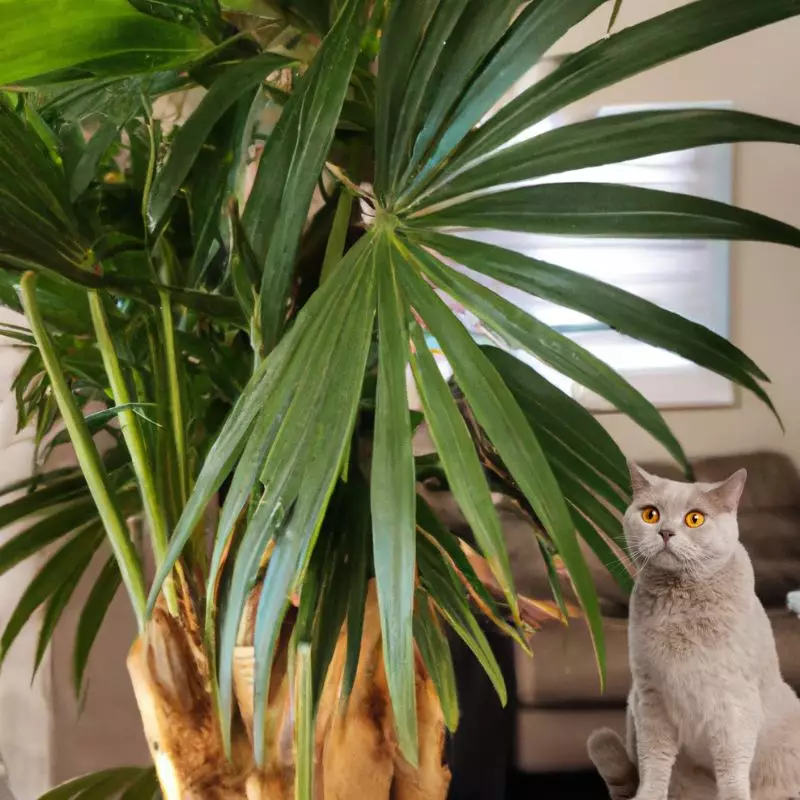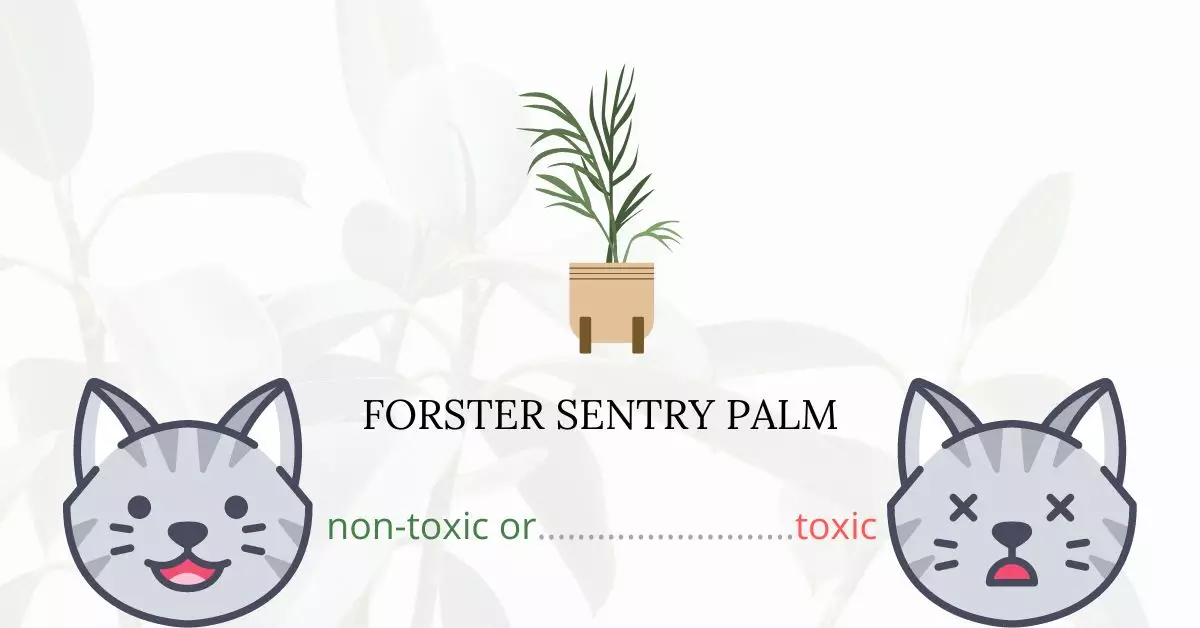No, the Forster Sentry Palm is not toxic to cats.
This article has been crafted with the expert guidance of a team of experienced DVMs (doctors of veterinary medicine). Their insights, coupled with our research from high-authority sources such as the ASPCA and PetMD, ensure that we present you with accurate and current data about the potential risks associated with various plants, including the Forster Sentry Palm, and their effects on our feline friends. The ASPCA (American Society for the Prevention of Cruelty to Animals) classifies the Forster Sentry Palm as a non-toxic plant, meaning it does not contain properties that can harm cats. Therefore, cat owners can rest assured when this plant is within their pet’s reach.
However, while this specific palm poses no threat, it’s important for cat owners to be aware of the general risks and considerations associated with their pets consuming plants. Dive deeper into this article to learn more about the Forster Sentry Palm and other related concerns for your feline companions.
Can Cats Eat Forster Sentry Palm?

Since Forster sentry palm does not have toxic properties, there are no life-threatening effects on cats in case they eat it.
However, since cats are obligate carnivores, it is difficult for them to digest plant matter. Eating a lot of plants may cause them to feel sick and show gastrointestinal symptoms such as vomiting and mild diarrhea. The symptoms will subside though after the cat has fully eliminated the plant materials from his body.
It is still best to only give proper and well-balanced cat food to your feline companions.
What is Forster Sentry Palm?

Howea forsteriana is the scientific name for the Forster sentry palm. It is a blooming plant in the palm family Arecaceae that is native to Lord Howe Island in Australia. It’s also popular on Norfolk Island. It is a somewhat slow-growing palm, ultimately growing up to 10 meters tall and 6 meters broad.
Forster sentry palm acquired enormous popularity as a houseplant in Europe and the United States during the Victorian era, a time when exotic palms and other plants were enthusiastically collected in England.
The palm is an appealing plant and is popular for growing inside, requiring minimal light. It likes a tropical climate but will thrive in a temperate climate and can endure temperatures as low as -5 °C for a few hours. It grows well outside in places like southern Australia and northern New Zealand, where it is prevalent in private gardens or as a street tree.
Forster sentry palm is also commonly called Kentia palm, thatch palm or palm court palm.
Keeping Cats Away From Forster Sentry Palm

The most common way to keep your cats away from your Forster sentry palm is to use deterrent spray. Make sure that you only use the natural ones and always check the ingredients of the product before using it.
You may also use a mixture of water and vinegar and spray it on your plants. Cats do not like the smell and taste of vinegar so they avoid it.
Still, the best method to safeguard both your plants and cats is to train your feline babies to stay away from plants.
Plants to Avoid For Your Cats
If you are a cat owner and unsure if the plants growing in your yard are harmful to your cats, check out this list of toxic plants for cats. You can also check our list of non-toxic plants for cats.





